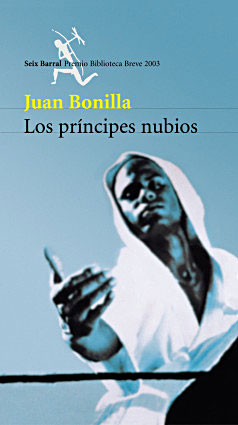
Totalidad sexual del cosmos
» National Novel Award
Juan Bonilla’s book sheds light on the largely forgotten figure of Nahui Olin, one of the most charismatic women in Mexican art of the 20th century.
This is a story of love and ghosts.
In 1920s Mexico, Nahui Olin was everybody’s favourite muse. She was painted by Diego Rivera and Montenegro, photographed by Weston and Garduño, and drawn by Marías Santoyo and Dr. Atl. Being an artists’ model was something of a disadvantage to her career as a painter and poet. It was never fully appreciated that for Nahui Olin, being the inspiration for paintings, drawings and songs was part of her creative expression. In fact, her first exhibition contained nothing she had made herself, only pieces she had inspired. In the 30s, after the death of her great love, ship’s captain Eugenio Agacino, she withdrew from artistic circles, seeming to care little that old friends thought she had lost her mind. She lived on for decades in relative obscurity, devoted to scientific research; she attempted to develop Einstein’s theory of relativity. Meanwhile, the artists with whom she had shared her youth became increasingly famous.
Nahui Olin died alone and almost forgotten in 1978. On that very day, a young mural restorer called Tomás Zurián stumbled across a photograph of her as a young woman. Intrigued, he set out on a journey of discovery that was to take years, full of such strange coincidences he was ultimately convinced that Nahui Olin herself was showing him the way. Fifteen years later, Zurián, who had given up everything for his obsession, exhibited the artist’s work for the first time. Since then, recognition of her importance, rebelliousness and reputation have gone from strength to strength, sparking universal admiration and debate.
Sexual Totality of the Cosmos was the title of a book Nahui Olin left unfinished, conceived of as a repository for all her knowledge, poetry and science, painting and music. It is also a novel that tells the fascinating story of the artist as well as the man who dedicated his life to rescuing her from unwarranted obscurity.
Carmen Mondragón, better known as Nahui Olin, was a painter and poet; an exceptional artist of tremendous charisma and sensuality. Intelligent and intuitive, she pursued personal freedom above all else. Born in Mexico in 1893, she lived in Paris during the early years of the twentieth century where she met Braque, Matisse and Picasso. After a time in San Sebastian, she plunged headlong into Mexican artistic life. Remarkable for her early feminist ideas, hers was a provocative, eclectic life which explored art, poetry and philosophy, maths and science.
«A highly intelligent prose with depths that multiply quickly from page to page as it (first) convinces and (then) hypnotizes the reader. A mature prose, well versed in the secrets of storytelling, of the sophisticated techniques the contemporary novel can draw on… Bonilla has done it: he squares the circle of his protagonist’s life with the perfection proper to an artist of the word, amid paintings, dances, social life, intellectual angst, and narrative complexity.»
»And he manages––likely with great effort, although it never seems like it––to master the myth, to portray the legend, to draw out the biography of Nahui Olin until the reader has a part in the ritual of madness experienced by that woman, which forms the nucleus of the novel… Read this extraordinary novel by Juan Bonilla, the novel of a mad genius composed in incredibly scrupulous prose, hard to write but easy to follow for those true readers who know what literary prose is.» J. J. Armas Marcelo, El Cultural
















